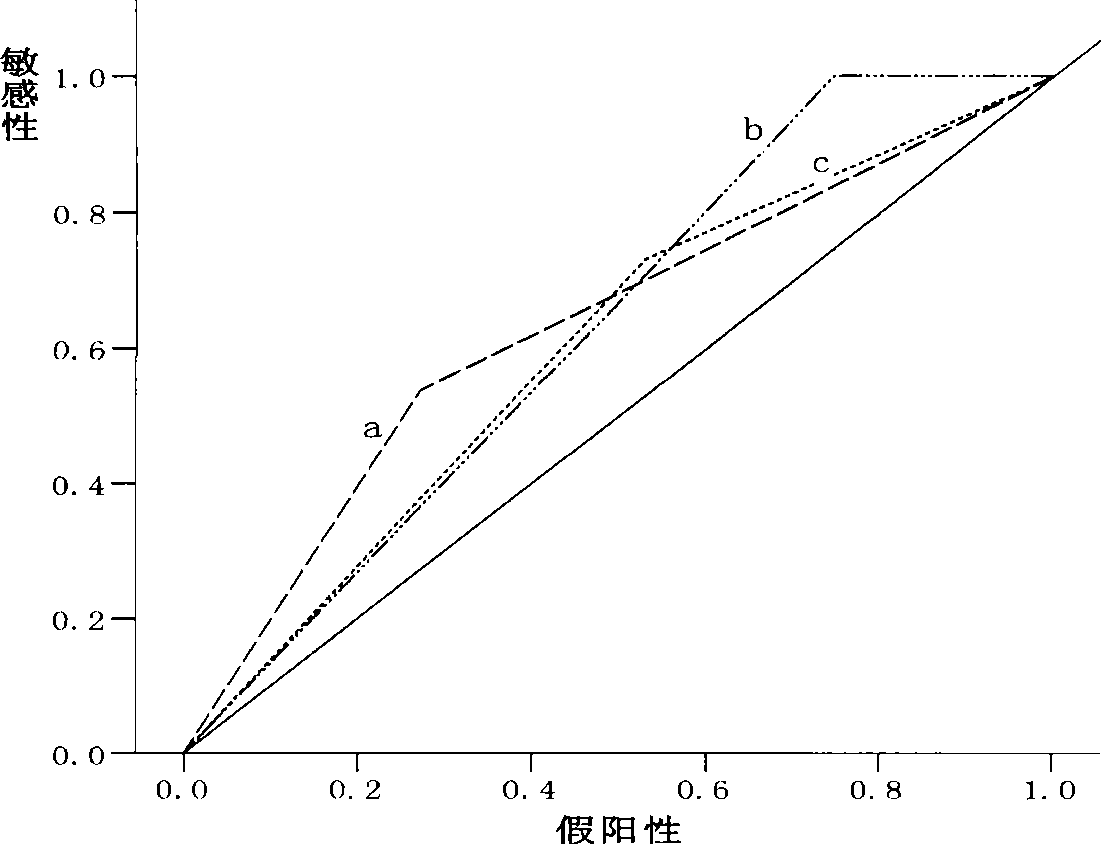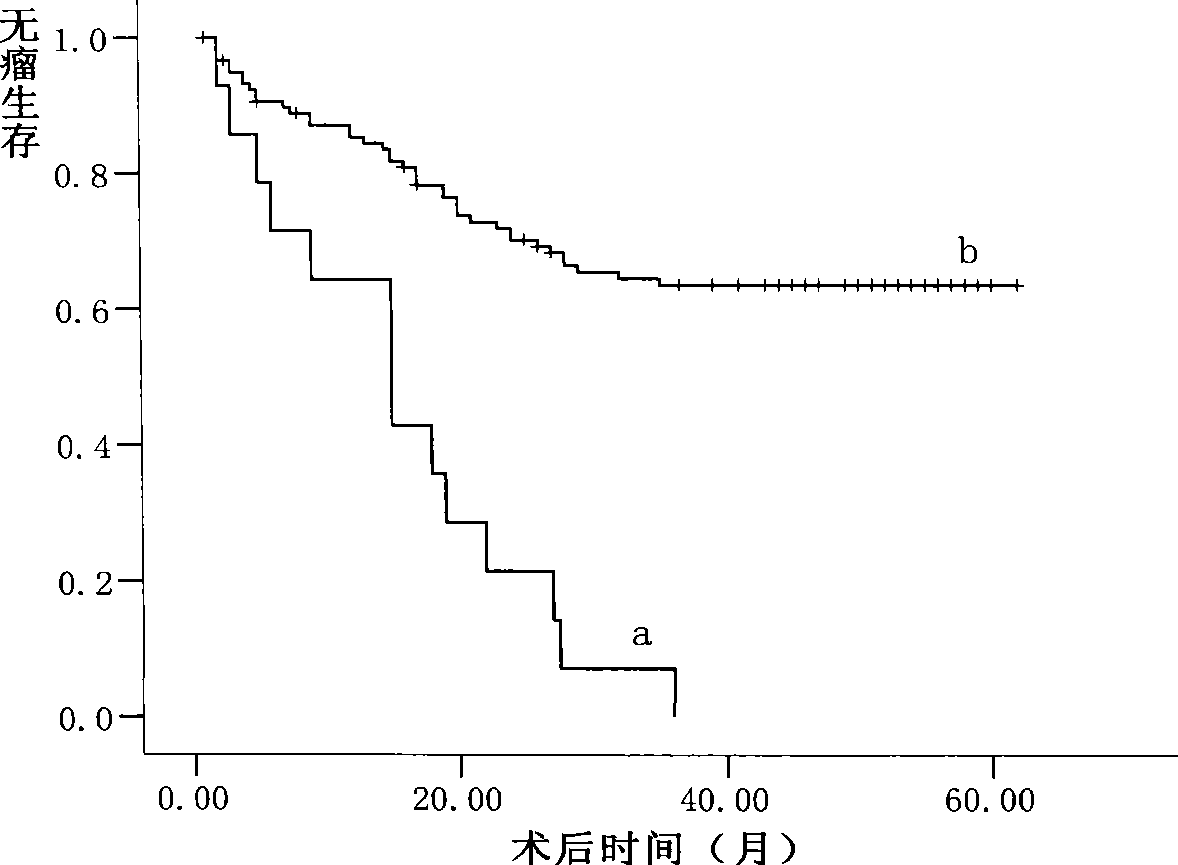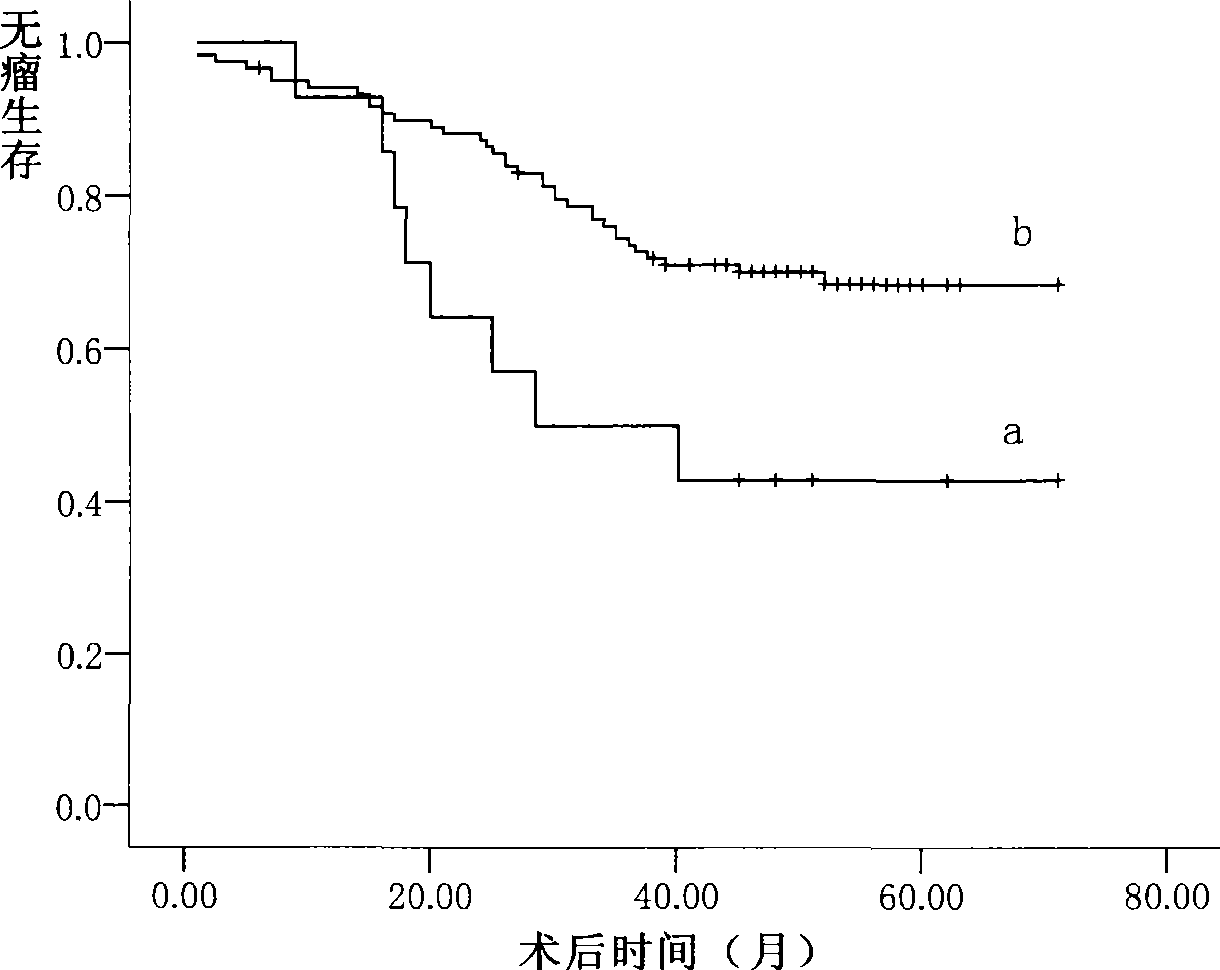Method for predicting liver cancer transfer relapse of primary liver cancer patient after operation
A technology for primary liver cancer and liver cancer metastasis, applied in the biological field, can solve the problems of low prediction accuracy, loss, and unsuitability for downstream protein antigen-antibody binding reactions.
- Summary
- Abstract
- Description
- Claims
- Application Information
AI Technical Summary
Problems solved by technology
Method used
Image
Examples
Embodiment 1
[0020] A method for predicting liver cancer metastasis and recurrence in patients with primary liver cancer after surgery, characterized in that the specific steps are:
[0021] The first step: 3-[(3-cholamidopropyl) dimethylamino] propanesulfonate, dithiothreitol, ethylenediaminetetraacetic acid, phenylmethylsulfonyl fluoride, gastric inhibitory peptide and Aprotinin was dissolved in a phosphate buffer solution of pH 7.0 so that the final concentration of 3-[(3-cholamidopropyl)dimethylamino]propanesulfonate was 3mM and the final concentration of dithiothreitol was 10mM , the final concentration of ethylenediaminetetraacetic acid is 2mM, the final concentration of phenylmethylsulfonyl fluoride is 0.2mM, the final concentration of gastric inhibitory peptide is 0.5mM, and the final concentration of leupeptin is 0.5mM, and the protein extract is prepared;
[0022] The second step: put the frozen liver cancer pericancerous tissue in liquid nitrogen, smash it into powder, add prote...
Embodiment 2
[0025] A method for predicting liver cancer metastasis and recurrence in patients with primary liver cancer after surgery, characterized in that the specific steps are:
[0026] The first step: 3-[(3-cholamidopropyl) dimethylamino] propanesulfonate, dithiothreitol, ethylenediaminetetraacetic acid, phenylmethylsulfonyl fluoride, gastric inhibitory peptide and Aprotinin was dissolved in a phosphate buffer solution of pH 7.5, so that the final concentration of 3-[(3-cholamidopropyl)dimethylamino]propanesulfonate was 28mM, and the final concentration of dithiothreitol was 80mM , the final concentration of ethylenediaminetetraacetic acid is 35mM, the final concentration of phenylmethylsulfonyl fluoride is 8mM, the final concentration of gastric inhibitory peptide is 9.8mM, and the final concentration of leupeptin is 11mM, and the protein extract is prepared;
[0027] The second step: put the frozen liver cancer pericancerous tissue in liquid nitrogen, smash it into powder, add prot...
Embodiment 3
[0030] A method for predicting liver cancer metastasis and recurrence in patients with primary liver cancer after surgery, characterized in that the specific steps are:
[0031] The first step: 3-[(3-cholamidopropyl) dimethylamino] propanesulfonate, dithiothreitol, ethylenediaminetetraacetic acid, phenylmethylsulfonyl fluoride, gastric inhibitory peptide and Aprotinin was dissolved in a phosphate buffer solution of pH 7.2, so that the final concentration of 3-[(3-cholamidopropyl)dimethylamino]propanesulfonate was 10mM, and the final concentration of dithiothreitol was 45mM , the final concentration of ethylenediaminetetraacetic acid is 17mM, the final concentration of phenylmethylsulfonyl fluoride is 4mM, the final concentration of gastric inhibitory peptide is 5mM, and the final concentration of leupeptin is 5mM, and the protein extract is prepared;
[0032] The second step: put the frozen liver cancer pericancerous tissue in liquid nitrogen, smash it into powder, add protein...
PUM
 Login to View More
Login to View More Abstract
Description
Claims
Application Information
 Login to View More
Login to View More - R&D
- Intellectual Property
- Life Sciences
- Materials
- Tech Scout
- Unparalleled Data Quality
- Higher Quality Content
- 60% Fewer Hallucinations
Browse by: Latest US Patents, China's latest patents, Technical Efficacy Thesaurus, Application Domain, Technology Topic, Popular Technical Reports.
© 2025 PatSnap. All rights reserved.Legal|Privacy policy|Modern Slavery Act Transparency Statement|Sitemap|About US| Contact US: help@patsnap.com



